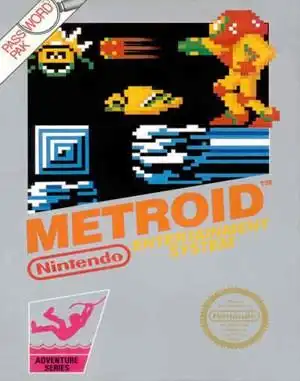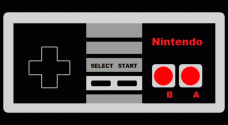Few game series evoke the same sense of atmospheric isolation and thrilling discovery as Metroid. From its humble beginnings on the NES, the adventures of bounty hunter Samus Aran carved a unique path in the gaming landscape, blending tight action with expansive, non-linear exploration. For many of us who grew up with a controller in hand during the 80s and 90s, venturing into the depths of Planet Zebes or SR388 felt like stepping into a truly alien, dangerous world, armed with little more than our wits and an ever-growing arsenal.
This isn't just a series about shooting aliens; it's about getting lost, finding hidden paths, and feeling that satisfying click as a new power-up unlocks a previously inaccessible area. That core loop, perfected over decades, is a huge part of why Metroid holds such a special place in the retro gaming pantheon. Let's take a trip through the evolution of this legendary franchise.
The Genesis of a Legend: 8-Bit Beginnings
Back in 1986 (or 1987 in North America), the original Metroid landed on the NES and felt... different. While Super Mario Bros. was about forward momentum, Metroid forced you to backtrack, to explore vertically and horizontally, and to piece together the map in your mind. The stark graphics and eerie, sparse music created an unforgettable atmosphere of solitude. And that ending reveal? Mind blown for a whole generation!
Metroid II: Return of Samus on the Game Boy (1991) brought the adventure to portable screens, introducing new enemy types and evolving the narrative, even if the monochrome visuals were a step back graphically from the NES. It solidified the core gameplay loop and further cemented Samus as a lone wolf hero.
The Defining Moment: Super Metroid on the SNES
For many fans, the absolute pinnacle arrived in 1994 with Super Metroid on the Super Nintendo. This game took everything great about the first two and expanded it into a masterpiece. The graphics were lush and detailed, the music was haunting and iconic, and the controls were arguably some of the best on the system.
Super Metroid refined the exploration, power-up progression, and environmental storytelling to near perfection. Finding a hidden missile expansion, mastering the Wall Jump, or finally getting the Screw Attack felt incredibly rewarding. It's a game that still holds up magnificently today and is often cited as one of the greatest games ever made, a true benchmark for the "Metroidvania" genre it helped define.
Venturing into 3D: The Prime Era
After a long hiatus following Super Metroid, the series made a bold leap into 3D with Metroid Prime on the GameCube in 2002, developed by the wizards at Retro Studios. Shifting to a first-person perspective was a risk, but Retro Studios masterfully translated the exploration and atmosphere of the 2D games into a stunning 3D world.
Metroid Prime felt less like a typical FPS and more like an "exploration game" from a first-person view. Scanning the environment, solving environmental puzzles, and slowly uncovering the secrets of Tallon IV was just as compelling as blasting Space Pirates. The sequels, Metroid Prime 2: Echoes and Metroid Prime 3: Corruption, continued this legacy, expanding the lore and gameplay, even if Echoes was sometimes criticized for its difficulty or structure by some fans.
Back to the Roots: Modern 2D Revivals
Even as Prime explored 3D, Nintendo didn't forget the series' 2D roots. Metroid Fusion (2002) and Metroid: Zero Mission (2004) on the Game Boy Advance delivered fantastic side-scrolling experiences, the latter being a brilliant remake of the original NES game.
Most recently, Metroid Dread (2021) on the Switch brought the classic 2D formula back with stunning visuals, fluid movement, and terrifying new pursuers in the E.M.M.I. robots. It proved that the core Metroid gameplay is as compelling as ever, capable of feeling both nostalgic and fresh.
Why We Still Love Metroid
So, why does Metroid continue to resonate with retro gamers?
- Atmosphere: The feeling of isolation in a hostile, alien world is unmatched.
- Exploration: The non-linear design rewards curiosity and backtracking.
- Power-Ups: The tangible sense of growth as you unlock new abilities.
- Samus Aran: A quiet, capable hero who lets her actions speak louder than words.
- World Design: Intricate, interconnected maps full of secrets.
Whether you first played it on a fuzzy CRT or a modern handheld, the journey through a Metroid game is a unique experience of solitary adventure and empowering discovery.
How to Revisit Zebes and Beyond
Curious to dive back in or experience the classics for the first time? Many Metroid games are available on modern Nintendo platforms through digital stores or subscription services. Emulation is another popular route for experiencing the older titles on PC, allowing for save states and visual enhancements. Check official sources or digital storefronts for the best ways to play legally today.
No matter how you play, the call of the Chozo Ruins and the depths of Tourian await.
Frequently Asked Questions
Q: Where should a newcomer start with the Metroid series? A: Super Metroid is often recommended as it's a masterpiece that perfected the 2D formula. For 3D, Metroid Prime Remastered is an excellent entry point. Metroid Dread is also accessible and a great modern 2D experience.
Q: What does "Metroidvania" mean? A: It's a genre term combining "Metroidvania" and "Castlevania" (specifically Symphony of the Night). It describes games featuring a large, interconnected world map that players explore gradually, with access to new areas gated by power-ups or abilities found later in the game.
Q: Is Samus Aran a man or a woman? A: Samus Aran is famously a woman! This was a surprising reveal at the end of the original game and was groundbreaking for its time.
Q: Are the Metroid Prime games first-person shooters? A: While played from a first-person perspective, Metroid Prime games emphasize exploration, puzzle-solving, and platforming just as much as combat. They are often described as first-person adventure or exploration games rather than traditional FPS titles.


